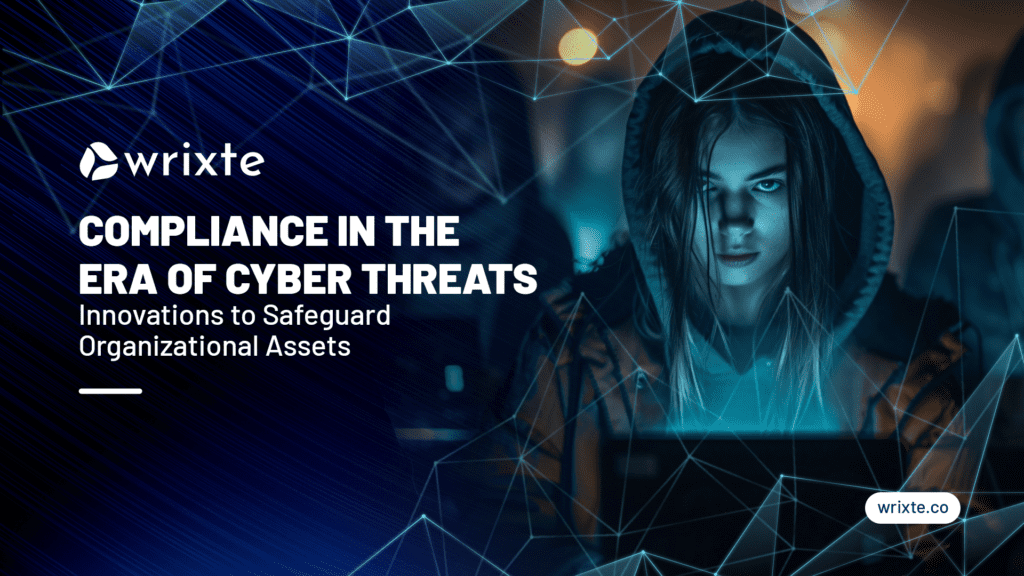In today’s digital age, the frequency and sophistication of cyber threats have escalated to unprecedented levels. To safeguard organizational assets, it is imperative for enterprises to adopt innovative compliance strategies. Wrixte looks into the advanced compliance measures and technological innovations that provide a fortified defense against cyber threats.
Advanced Encryption Techniques
Encryption remains a cornerstone of cybersecurity, protecting data in transit and at rest. However, traditional encryption methods are becoming inadequate against modern cyber threats. Innovations in encryption, such as homomorphic encryption and quantum-resistant algorithms, are now at the forefront.
Homomorphic Encryption
Homomorphic encryption allows computations to be performed on encrypted data without decrypting it, thereby preserving confidentiality. This technique is particularly advantageous in cloud computing environments where sensitive data can be processed securely by third-party services without exposing the raw data.
Quantum-Resistant Algorithms
With the advent of quantum computing, current encryption algorithms such as RSA and ECC are vulnerable to being broken. Quantum-resistant algorithms, also known as post-quantum cryptography, are designed to withstand the computational power of quantum computers. NIST is actively working on standardizing these algorithms to future-proof encryption methods.
Blockchain for Enhanced Security
Blockchain technology, known for its decentralized and immutable ledger, is revolutionizing the way organizations approach data integrity and security compliance.
Secure Data Transactions
Blockchain ensures that all transactions are recorded in a tamper-proof ledger. This immutability guarantees data integrity, making it invaluable for maintaining accurate and auditable records, which is essential for compliance with regulations like GDPR and HIPAA.
Smart Contracts
Smart contracts automate compliance by embedding regulatory requirements directly into the blockchain. These self-executing contracts ensure that transactions comply with predefined rules, reducing the risk of human error and enhancing trustworthiness.
Artificial Intelligence and Machine Learning
Artificial Intelligence (AI) and Machine Learning (ML) are transforming cybersecurity by enabling proactive threat detection and response. These technologies offer advanced capabilities in identifying and mitigating cyber threats before they can cause significant damage.
Predictive Analytics
AI and ML algorithms analyze vast amounts of data to predict potential threats. By identifying patterns and anomalies, these systems can anticipate attacks and initiate preventive measures. Predictive analytics is particularly effective in detecting zero-day exploits and advanced persistent threats (APTs).
Automated Threat Response
Integrating AI with Security Information and Event Management (SIEM) systems facilitates automated threat response. AI-driven SIEMs can autonomously respond to threats by isolating compromised systems, applying patches, and updating security policies in real-time, significantly reducing the window of vulnerability.
Zero Trust Security Model
The Zero Trust security model operates on the principle that no entity, whether inside or outside the network, should be trusted by default. This approach necessitates continuous verification and robust access controls.
Microsegmentation
Microsegmentation involves dividing the network into smaller, isolated segments. Each segment enforces strict access controls, limiting lateral movement by attackers. This granular segmentation ensures that even if one segment is compromised, the breach is contained and prevented from spreading.
Identity and Access Management (IAM)
Advanced IAM solutions are critical to the Zero Trust model. By implementing multi-factor authentication (MFA) and adaptive authentication, organizations can ensure that only authorized users gain access to critical systems and data. IAM solutions also facilitate compliance with regulations like SOX and PCI DSS by maintaining detailed access logs and audit trails.
Regulatory Technology (RegTech)
Regulatory Technology, or RegTech, leverages innovative technology to streamline compliance processes, making them more efficient and effective.
Continuous Compliance Monitoring
RegTech solutions provide continuous monitoring of compliance status by integrating with existing security systems and analyzing data in real-time. This constant vigilance allows organizations to promptly identify and rectify compliance gaps, ensuring ongoing adherence to regulatory requirements.
Automated Reporting
Automated reporting tools within RegTech solutions generate comprehensive compliance reports, reducing the administrative burden on security teams. These tools ensure that reports are accurate, up-to-date, and formatted according to regulatory standards, facilitating easier audits and inspections.
Secure DevOps (DevSecOps)
Integrating security into the DevOps process, known as DevSecOps, ensures that security is a fundamental part of the software development lifecycle (SDLC).
Continuous Security Integration
By embedding security checks and balances into CI/CD pipelines, DevSecOps ensures that security vulnerabilities are identified and addressed early in the development process. This approach minimizes the risk of deploying vulnerable code into production environments.
Infrastructure as Code (IaC)
IaC involves managing and provisioning computing infrastructure through machine-readable scripts, ensuring consistent and secure configurations. This automation eliminates human error and ensures that infrastructure deployments adhere to security best practices and compliance requirements.
Conclusion
In an era where cyber threats are both sophisticated and relentless, organizations must adopt innovative compliance strategies to safeguard their assets. Advanced encryption techniques, blockchain, AI and ML, Zero Trust security models, RegTech, and DevSecOps represent the cutting edge of these strategies. By implementing these advanced measures, organizations can enhance their cybersecurity resilience and maintain robust compliance with evolving regulatory requirements. Wrixte is dedicated to helping enterprises around these complexities and achieve unparalleled security and compliance in the digital age.

